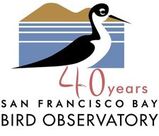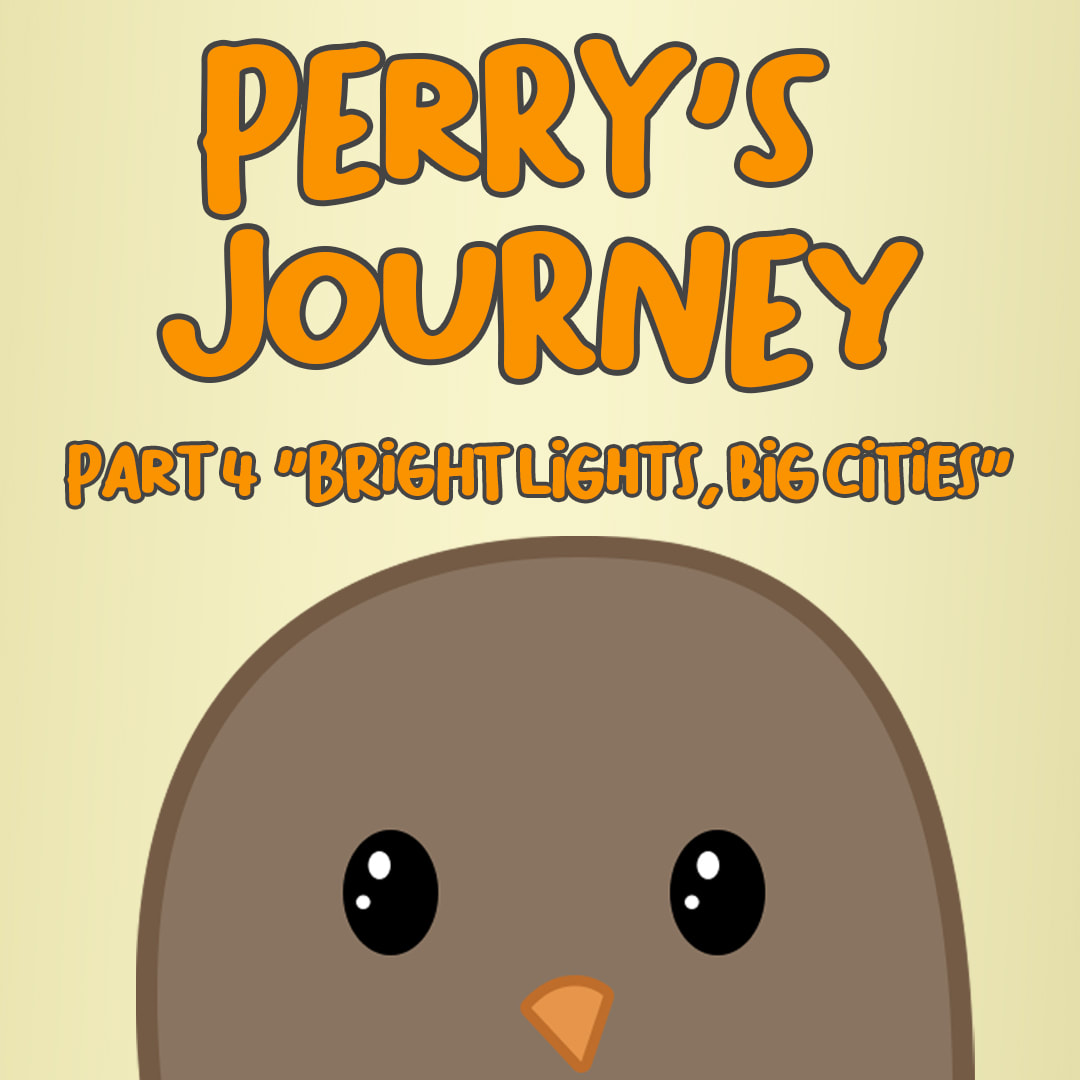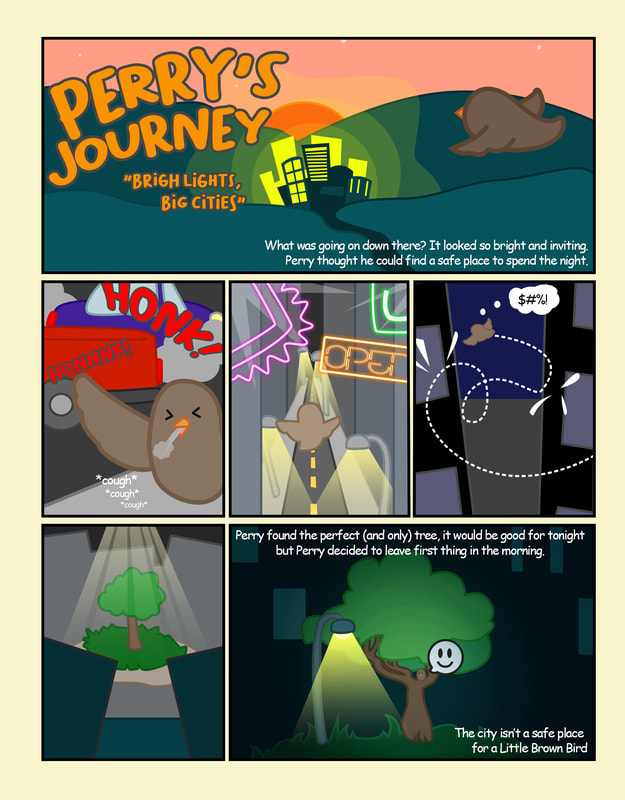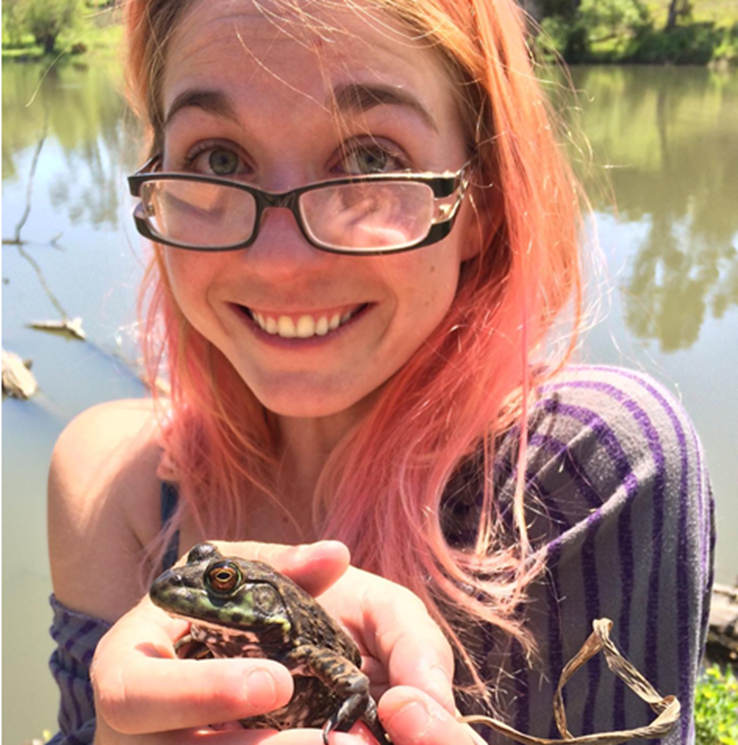|
By Science Outreach Katrina McCollough
Issue Spotlight - Building Collisions One major issue for birds that has been gaining more recognition recently is bird collisions. Up to 1 BILLION birds die each year in the US from building collisions, most of these collisions are in major cities and during migration. Big cities can be scary for all of us: the noise, the lights, the tall buildings, and the congestion of people and cars. But for Little Brown Birds like Perry, cities can be not just scary but deadly. Why do bird collisions happen? Sirena Lao, our own environmental education and outreach specialist here at SFBBO, has spent time studying bird collisions. Sirena summed up the issue of bird collisions really nicely, “The main reason for bird-building collisions is that buildings are covered with glass, and birds can fail to perceive glass as a barrier. Many birds migrate at night and are attracted to artificial light, so they are drawn to places with a lot of light pollution (like cities). There, they are likely to encounter hazards like urban predators, cars, and of course glass. Plus, by being diverted from their migration route, they burn up their precious energy reserves and often have fewer opportunities to refuel in urban areas.” What We Can Do The National Audubon Society has an amazing "Lights Out" campaign which partners with local Audubon chapters to promote individuals to turn off their lights from 11 p.m. to dawn during migration periods. Are you a night owl? During migration try to keep your lights off after 11, maybe share the news with your neighbors. If we can make our cities a little darker for only a few weeks a year, we could potentially save millions of bird lives. Also, there’s a lot of information on making your windows bird safe. The American Bird Conservancy has an amazing page giving resources and more information about this issue. What to do if you find a bird that has been stunned by hitting a glass window? Let’s go with the expert on this, Sirena recommends: “If a stunned bird is found, bring it to your nearest wildlife rehabilitation center. A bird that survives a collision may seem to recover after a few minutes, but it may still have internal injuries, so it’s best for it to get examined by a rehab professional. People can also report sightings of bird collisions at Dbird.org, Birdmapper.org, or iNaturalist.org” If you live in the Bay Area, Rescue and Rehabilitation of San Francisco Bay Area Wildlife and South Bay Wildlife Rehab are both great resources. If you don’t live in the Bay, try Googling "[insert county name here] wildlife rehabilitation center" to find one near you. If you want to do a little further reading and watching you can check out Why Birds Hit Windows and How You Can Help Prevent It. And, while this video is very sad and shows birds who have died from hitting buildings, it’s very powerful and shows the problem better than words ever could. The Mission of Perry's Journey - A Message from the Illustrator It’s important we understand that just because birds can fly over it all, doesn’t mean they aren’t affected by what’s going on down here on the ground. The population of North American birds has dropped by nearly 30% since the 1970s, that is a total of almost 3 billion birds. Gone. Birds are incredibly important to the balance of our ecosystems: they are essential as pollinators and for seed dispersal, particularly for native plants, and they feed on and help control a variety of critters we consider pests like insects and rodents. Bird studies teach us about climate and the environment, and the birds themselves are key indicators of environmental change. And, most simply, birds are beautiful, and they provide us with music and joy. The protagonist of this story, Perry, is doing his part as a bird, migrating to his northern breeding location to hopefully pass on his little brown bird genes. It’s all he can do. Perry’s Journey illustrates the important journey of birds like him across the globe, who are doing their parts to help. Migrating birds are disproportionately affected because they need not just one habitat, but multiple habitats that can serve as stopping points along their journeys. We call these migration corridors and it’s important that they are protected: for the birds’ sakes as well as our own. Birds like Perry can’t control what happens on the ground, or in the water and air, but we can. During Perry’s journey over the couse of ten posts, we will go into some of the main issues facing not just migrating birds, but all birds, and what you can do to help. To support SFBBO's work to conserve birds and their habitats through science and outreach, please make a donation to our Spring Appeal!
0 Comments
Your comment will be posted after it is approved.
Leave a Reply. |
WingbeatWingbeat is a blog where you can find the most recent stories about our science and outreach work. We'll also share guest posts from volunteers, donors, partners, and others in the avian science and conservation world. To be a guest writer, please contact [email protected]. Archives
July 2024
Categories
All
|
San Francisco Bay Bird Observatory ● 524 Valley Way, Milpitas, CA 95035 ● 408-946-6548 ● [email protected]




 RSS Feed
RSS Feed